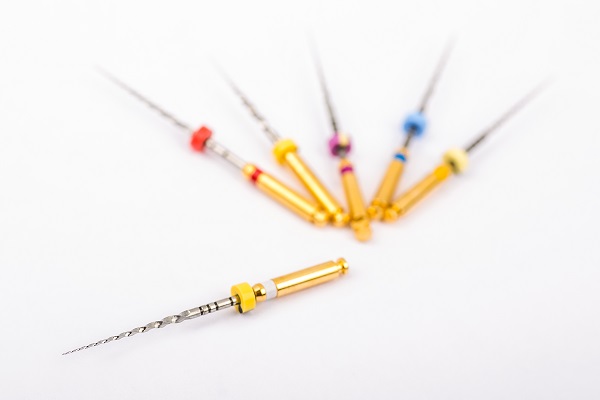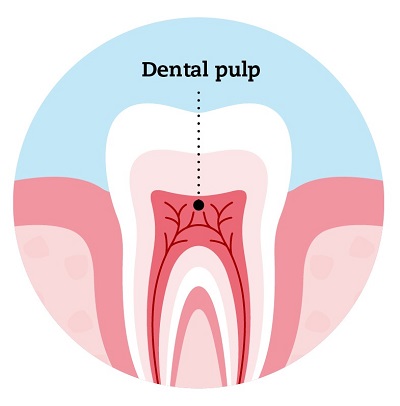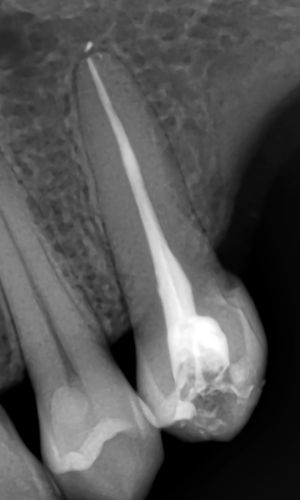
Instead of extracting a severely damaged or infected tooth from the mouth, a root canal procedure is used to save and restore the tooth. The dental pulp, which is the badly injured or infected nerve tissue inside the tooth, is removed by the dentist during a root canal procedure. To fill the cavity left by the missing dental pulp, a substance known as gutta percha is used. A conventional dentist or an endodontist, a specialist in root canal therapy, can administer root canal therapy.
The dental pulp
The dental pulp is the soft tissue located in the centre of the tooth as well as in the canals of the tooth root/s. Both nerves and blood vessels are located in the dental pulp.

A tooth can continue to function without the dental pulp after it is removed and replaced with a filling by a root canal treatment.
What damages the dental pulp?
The three main methods of damage to the dental pulp include:
- Tooth decay that travels into the dental pulp causing it to become infected or severely inflamed.
- Severe injury or damage to a tooth. This type of damage can come from playing sports, a car accident or even a fall.
- A crack in the tooth that extends into the dental pulp.
Possible signs and symptoms
There are a few signs and symptoms that mean you might need a root canal treatment.
- Severe pain that does not go away after taking pain medication.
- Severe pain when biting together or while chewing.
- A pimple on the gums next to a tooth.
- Tooth discomfort that continues even after the hot or cold item has been removed from the mouth.
- Deep tooth decay that may or may not be associated with pain or discomfort.
- A swollen area of the face.
The root canal treatment process
It is possible to complete a root canal procedure in a one appointment. But it frequently calls for several appointments. The following steps are taken when receiving a root canal treatment:
- Local anaesthetic is given to ensure the treatment is pain-free.
- A rubber dam is placed to isolate one or more teeth from the rest of the mouth.
- The dental pulp located in the centre of the tooth and extends down the tooth root/s is located and accessed.
- The dental pulp tissue is removed using small metal files and disinfectant.
- The disinfected space is filled with a material called gutta-percha.
- This root canal filling is sealed as a barrier from stopping bacteria from re-entering the space.
- The crown of the tooth is then fixed with a filling or a crown.
Dental x-rays are typically taken prior to, during, and following root canal therapy and are an essential component of the procedure. The dentist may look inside the tooth’s root canals with the use of these x-rays, which are invisible to the human eye.

An x-ray of a completed root canal treatment. Getty images.
What is a rubber dam?
A rubber dam is a square sheet of latex that is used to isolate one or more teeth from the rest of the mouth during dental treatment. Non-latex rubber dams are also used. It is a very important part of the root canal treatment that may impact treatment success.
One or more teeth receive a rubber dam during the root canal procedure. I do this for several reasons. The treatment area is kept free of saliva thanks to the rubber dam. Bacteria found in saliva have the potential to contaminate the area being cleaned and disinfected. The dental pulp tissue is also removed using tiny tools and sanitizer solutions. These can be used safely and apart from the rest of the mouth and throat thanks to the rubber dam.
Read more about Rubber dam for dental implants.
Does root canal treatment hurt?
Local anaesthetic is used during a root canal treatment to ensure that no discomfort occurs while the dentist is performing the treatment.
People may experience discomfort after their root canal treatment appointment, however many people do not. Your treating dentist will provide advice regarding pain relief.
How will my tooth be fixed after the root canal treatment?
Teeth treated with a root canal treatment may be fixed with either a filling or a crown. Your dentist will assess the tooth to recommend what is best for the tooth. This is based on factors such as where the tooth is located in the mouth, pressure placed on the tooth, the amount of natural tooth structure present.
Our molar teeth are subjected to a great deal of pressure because they are used to chew food. It is frequently advised that molar teeth be crown-fixed following a root canal procedure in order to shield them from the strong chewing forces. According to research, covering the cusps—raised projections on the premolar and molar teeth’s biting surfaces—will lengthen the tooth’s lifespan. It keeps cusps from stretching and bending, which could cause the tooth to break. The tooth might need to be extracted from the mouth if it breaks.
Studies report that a root canal treated tooth has a greater chance of surviving for a longer amount of time if the tooth is fixed with a crown. One study showed that the number of years that a root canal treated molar tooth lasted, decreased significantly if a crown was not used to fix the tooth. After 1 years, 96% of molar root canal treated teeth survived, after 2 years only 88 % survived and by 5 years, it was down to 36% of teeth. Another study reported that root canal treated teeth that are not treated with a crown were 6 times more likely to be removed than teeth that received a crown after the root canal treatment was completed.
Alternatives treatment options
Extraction of the tooth from the mouth is the only option available to replace a root canal therapy. In the event that the tooth is extracted, you will be responsible for covering the cost of additional care to replace the extracted tooth. It is not necessary to replace the tooth, and your dentist will go over the potential repercussions if it is not.
Summary
Instead of extracting a severely damaged or infected tooth from the mouth, a root canal procedure is used to save and restore the tooth. The badly injured or infected nerve tissue is removed by the dentist during a root canal procedure. The area occupied by the dental pulp is filled in with a filling. Ask your dentist if you have any of the aforementioned symptoms or if you would just like further information. As an alternative, you can book your dental appointment with us at www.dentaire.in
